
The spotted duiker (scientific name: Cephalophus zebra) is called Zebra Duiker, Banded Duiker, Zebra Antelope in English, Céphalophe Zébré, Céphalophe rayé in French, Duiquero Cebrado in Spanish, and Zebraducker in German. It has no subspecies and is a species endemic to the Upper Guinea Forest...
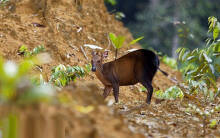
Weyns's Duiker (scientific name: Cephalophus weynsi) English Weyns's Duiker, French Céphalpohe de Weyns, German Weynsducker, has 3 subspecies. Weyns's Duiker can be distinguished from the bay duiker and white-bellied duiker distributed in the same area because they do not have obvious d...
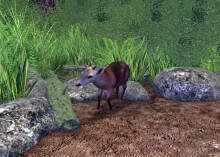
Tanzanian duiker (scientific name: Cephalophus spadix) English Abbott's Duiker, Minde, French Céphalophe d'Abbott, German Abbott-Ducker, Abbottducker, no subspecies. Tanzanian duiker and yellow-backed duiker are similar in size and color, but the yellow-backed duiker has a unique yellow wed...
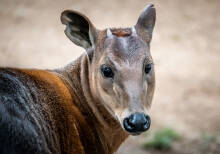
Yellow-backed Duiker (scientific name: Cephalophus silvicultor) English: Yellow-backed Duiker, French: Céphalophe géant, Céphalophe à dos jaune, Spanish: Duiquero de Lomo Amarillo, German: Gelbrückenducker, Riesenducker, there are 4 subspecies.The yellow-backed duiker is an unsociable species....

Red-flanked Duiker (scientific name: Cephalophus rufilatus) is called Red-flanked Duiker in English, Céphalophe à Flancs Roux in French, Blaurückenducker and Rotflankenducker in German, and has no subspecies.In the wild, red-rumped duikers occupy different habitats that rarely overlap. They live...
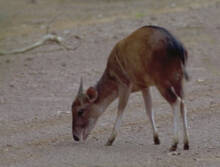
Ogilby's Duiker (Cephalophus ogilbyi) is known as Ogilby's Duiker in English, Céphalophe d'Ogilby in French, Duiquero de Ogilby in Spanish, Fernando-Po-Ducker, Ogilby-Ducker, Ogilbyducker in German, and has three subspecies.The Osmanthus duiker is one of the least known antelopes. The f...
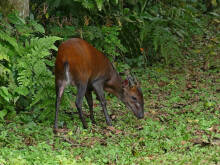
Black-fronted Duiker (scientific name: Cephalophus nigrifrons) English: Black-fronted Duiker, French: Céphalophe à front noir, German: Schwarzstirnducker, there are 6 subspecies.Black-fronted duikers are thought to be territorial, using feces and preorbital gland markings to demarcate territorial...
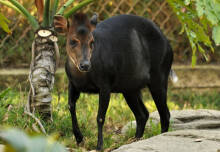
Black Duiker (scientific name: Cephalophus niger) is called Black Duiker in English, Céphalophe noir in French, and Schwarzducker in German. There is no subspecies.The Tanzanian Duiker and the Black Duiker are both dark in color, but the Tanzanian Duiker has a bright reddish-brown crest on its fore...
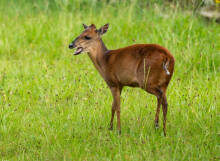
The Red Duiker (Cephalophus natalensis) is the only red duiker in its range; it is larger and has a more reddish-brown coat than the blue duiker and the natalensis. The Habsburg duiker is sometimes considered a subspecies of the Red Duiker, but can be distinguished by its darker legs and black facia...

Jentink's duiker (scientific name: Cephalophus jentinki) is called Jentink's duiker in English, Céphalophe de Jentink in French, Duiquero de Jentink in Spanish, and Jentinkducker in German. There are no subspecies.The Jans's Gazelle was discovered in 1884, but was not formally described...
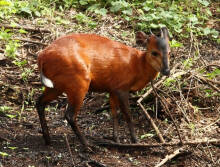
Harvey's Duiker (scientific name: Cephalophus harveyi) English: Harvey's Duiker, East African Red Duiker, Harvey's Red Duiker, French: Céphalophe de Harvey, German: Céphalophe de Harvey, no subspecies.The Harbour's and Black-fronted Duikers do not have dorsal stripes, and the Red D...
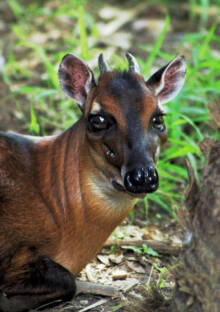
Bay Duiker (scientific name: Cephalophus dorsalis) English: Bay Duiker, French: Céphalophe bai, Céphalophe à bande dorsale noire, Spanish: Duiquero Bayo, German: Schwarzrückenducker, has 2 subspecies.In the wild, the similar “red duiker” species are often difficult to tell apart based on a bri...
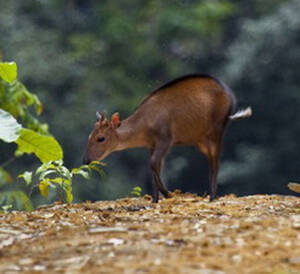
Blue-rumped duiker (scientific name: Cephalophus callipygus) English: Peters' Duiker, Gabon Duiker, French: Céphaplophe de Peter, German: Petersducker, Schönsteißducker, no subspecies.In the wild, the "red duikers" are often difficult to tell apart, especially when they're runni...
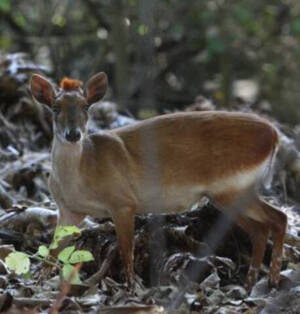
Cephalophus adersi (English: Aders' Duiker, German: Aders-Ducker, Adersducker, Sansibar-Ducker, Swahili: Paa Nunga, no subspecies.The Sangdao duiker is a typical solitary animal that lives in pairs during the breeding season. It is territorial, and the scent marking of the preorbital glands and...
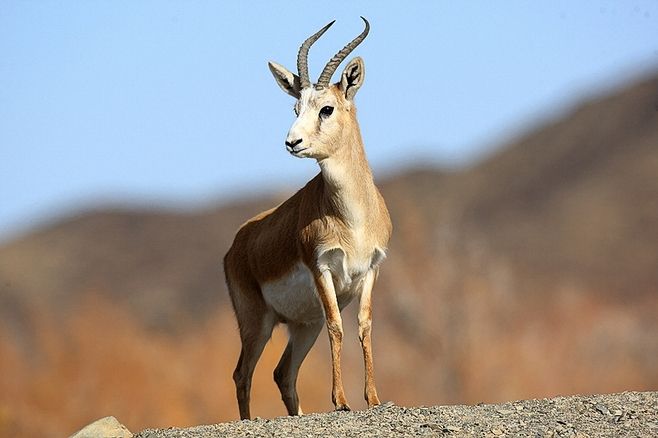
The goitered gazelle is a typical animal that lives in desert and semi-desert areas. It is shaped like a gazelle and is good at running. The male gazelle's throat is enlarged during the estrus period, resembling a goose's throat, hence the name "goitered gazelle". The swelling of t...